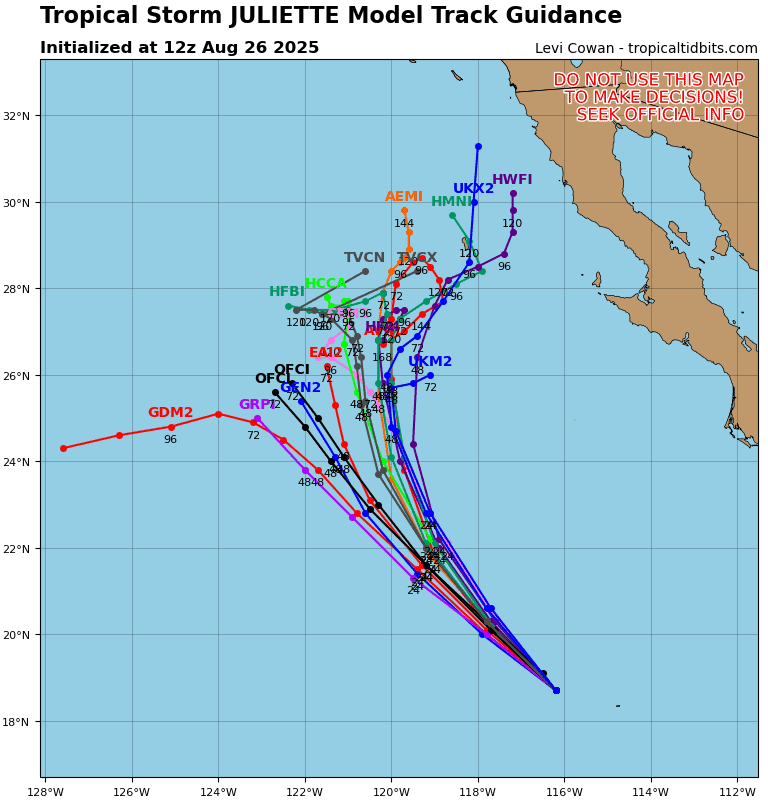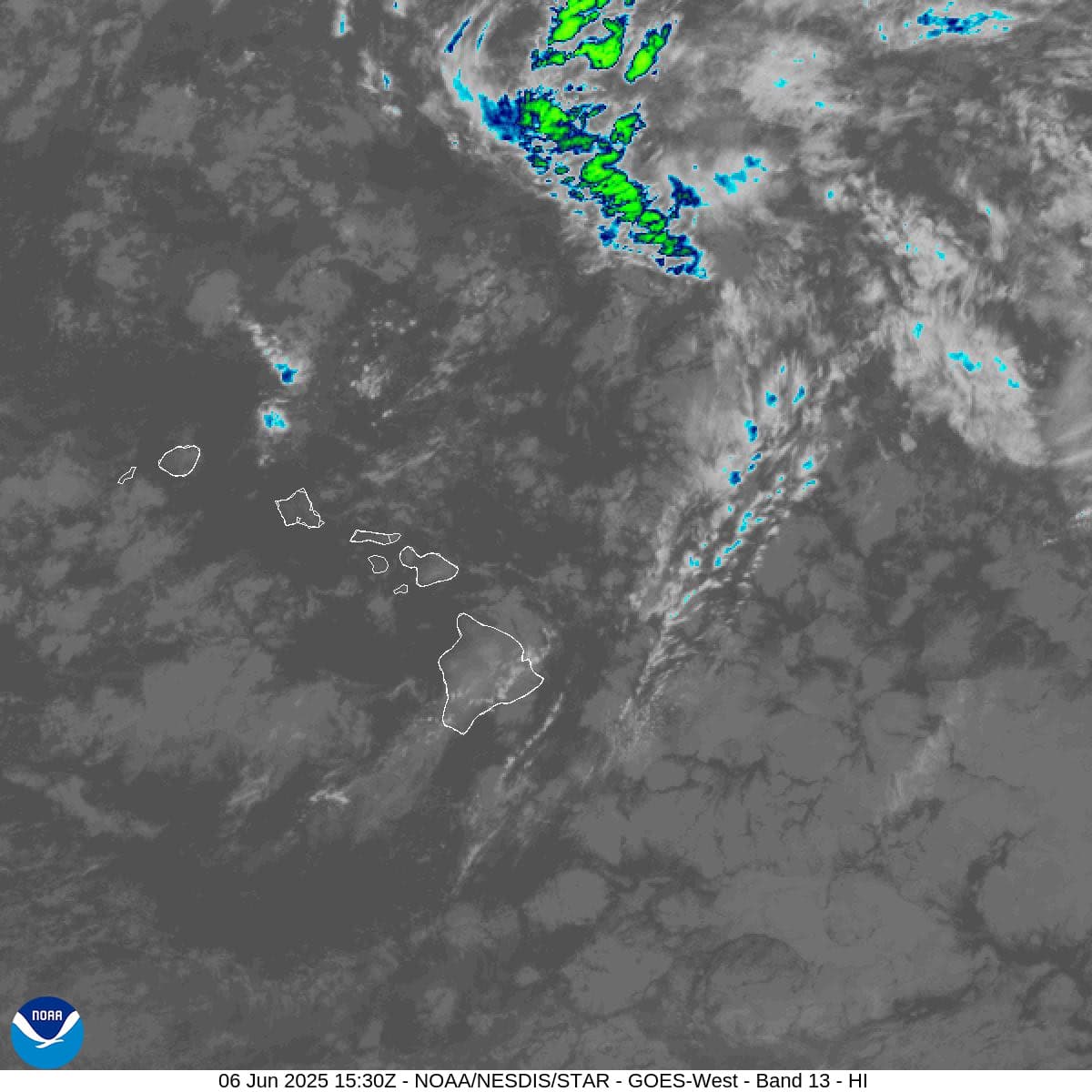Current Snapshot
For all the latest updates visit: DisasterAWARE
By PDC’s Senior Weather
Specialist Glenn James

The Pacific Disaster Center’s (PDC Global) Wednesday, September 25, 2024, Tropical Cyclone Activity Report…for the Pacific Ocean, the Indian Ocean, and adjacent Seas
Current Tropical Cyclones:
Tropical Cyclone John, is located about 75 miles southwest of Zihuatanejo, Mexico
Tropical Cyclone 18W (Cimaron), is located about 569 NM southwest of Yokosuka, Japan
Northeast Pacific Ocean:
Tropical Cyclone John
JOHN NEARING HURRICANE STRENGTH…CATASTROPHIC LIFE-THREATENING FLASH FLOODING AND MUDSLIDES CONTINUE OVER PORTIONS OF SOUTHERN MEXICO
According to the NHC advisory number 13A
John is moving toward the northwest near 5 mph (7 km/h) and this motion is expected to continue for the next day or two, followed by a gradual
turn to the west-northwest on Friday. On the forecast track, the center of John is forecast to approach the southwestern coast of Mexico by tonight and move along the coast or inland on Friday.
Maximum sustained winds have increased to near 70 mph (110 km/h) with higher gusts. John is forecast to strengthen to a hurricane later today, with additional strengthening expected until the center moves along the coast or inland.
Tropical-storm-force winds extend outward up to 150 miles (240 km) from the center.
HAZARDS AFFECTING LAND
RAINFALL: Through Friday, Tropical Storm John is expected to produce
additional rainfall amounts of 10 to 20 inches with isolated totals
around 30 inches across portions of the Mexican States of Guerrero,
Oaxaca and Michoacan.
STORM SURGE: A dangerous storm surge is expected to produce coastal flooding near and to the east of where the center makes landfall. Near the coast, the surge will be accompanied by large and destructive waves.
WIND: Hurricane conditions are expected along the coast within the
hurricane warning area by late Thursday or Thursday night. Winds are expected to first reach tropical storm strength within the next few hours, making outside preparations difficult or dangerous. Preparations to protect life and property should be rushed to completion.
Tropical storm conditions are currently occurring over portions of
the coast within the tropical storm warning area, and should continue into Thursday.
SURF: Swells associated with John are forecast to continue to affect the coast of southern and southwestern Mexico through the week, with the potential for dangerous surf and rip currents.
Central Pacific Ocean: There are no Tropical Cyclones.
Western Pacific, Indian Ocean, and adjacent Seas:
Tropical Cyclone 18W (Cimaron)
According to the JTWC warning number 7, sustained winds were 30 knots, with gusts to 40 knots.
TS 18W (Cimaron) reached its peak forecast intensity of 35 knots and quickly became decoupled, as depicted by animated multi-spectral satellite imagery (msi). A well-defined, well-wrapped low level circulation center (llcc) became fully exposed, tracking westward, while the associated deep convection and diffuse radial outflow sheared to the east. modest convection is observed on animated msi in the innermost eastern semicircle but is also shearing east.
The system is drifting slowly westward due to a weak steering environment as it tracks in a col region between two subtropical ridges to the west and east. The environment is assessed as marginally favorable because the vertical wind shear has temporarily decreased and sea surface temperatures remain conducive for tropical development.
Diffluence aloft has allowed the system to intensify, but the upper level environment is expected to become increasingly unfavorable as strong southwesterly flow approaches due to a trough digging into the long wave pattern northwest of the system. This trough will cause the ridge to the west to erode, at which point the ridge to the east will become the dominant steering mechanism around 36 hours.
A northeastward acceleration will occur near 48 hours, but this will also cause the system to elongate and entrain more dry air from the west. Hence, the system will begin to show signs of extratropical transition after 48 hours and become fully extratropical by 72 hours. Due to the weak nature of this storm, there is a strong possibility it will dissipate prior to undergoing extratropical transition.
>>> There’s an area of disturbed weather, being referred to as Invest 95W, which is located approximately 157 NM east-northeast of Saipan.
Animated enhanced infrared satellite imagery depicts a partially-exposed low-level circulation center, with flaring deep convection along the eastern and southern peripheries. A microwave image shows broad convective banding, with weak low-level structure. Recent scatterometry data indicates a swath of 20 to 25 knot convergent winds over the eastern and southern semicircles, which is fueling the aforementioned extensive deep convective bursts.
Environmental analysis indicates marginally favorable conditions, with warm sea surface temperatures and good equatorward outflow aloft, offset by moderate to high (20 to 25 knots) vertical wind shear.
Global models are in good agreement that the system will continue to track northwestward with gradual intensification over the next 12-36 hours.
Maximum sustained surface winds are estimated at 13 to 18 knots.
The potential for the development of a significant tropical cyclone
within the next 24 hours is upgraded to high.
>>> There’s an area of disturbed weather, being referred to as Invest 96W, which is located approximately 186 NM east-northeast of Yokosuka, Japan
The system is currently classified as a subtropical storm, generally
characterized as having both tropical and mid-latitude cyclone features.
Animated enhanced infrared satellite imagery depicts a broad, ragged low-level circulation center, with poorly-organized deep convection displaced to the east. A partial image reveals a patch of 30-35 knot winds over the northeastern quadrant.
Upper-level analysis indicates unfavorable conditions characterized by high (40-50 knots) vertical wind shear and broad divergence not conducive for tropical cyclone development.
Global models indicate a northeastward track away from Honshu, with extra-tropical transition as the system tracks into a strong baroclinic zone situated over the northern pacific ocean.
Maximum sustained surface winds are estimated at 30 to 35 knots.
The potential for the development of a significant tropical cyclone
within the next 24 hours is low.













